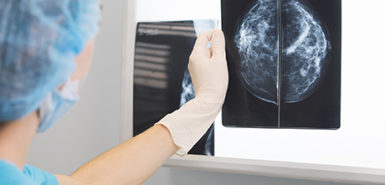
Exercise can help cancer patients cope with their treatment, but as many as 75 percent reduce their physical activity after diagnosis, a new study finds.
Getting motivated to exercise can be difficult when faced with a serious illness. And along with the fatigue and pain associated with cancer treatment, many patients may give up exercising, the study authors said.
“We have about 25 million cancer survivors in the United States, and there is mounting evidence that suggests that physical activity and exercise improve many outcomes in patients with cancer,” said lead researcher Dr. Jun Mao. He’s chief of integrative medicine service at Memorial Sloan Kettering Cancer Center in New York City.
These outcomes include a better quality of life and physical function and, potentially, survival, he noted.
Many patients feel that being sick and receiving chemotherapy are reasons not to exercise, Mao said.
“Patients say: ‘I’m going to feel horrible and I’m going to do as little as possible,’ ” he said. “They don’t realize that not being physically active can slow down their recovery from treatment.”
Medications and alternative treatments, such as acupuncture or yoga, can help alleviate pain and fatigue, he said.
Programs to help cancer patients maintain their physical activity are rare. “There need to be more exercise programs within health centers and in gyms to provide cancer patients with guidance to help them remain physically active,” Mao said.
In addition, doctors need to ask their patients about physical activity and encourage them to be active, he said.
“Physical activity is not about running marathons. Moderate activity—such as walking, riding a bike, or yoga or tai chi—are all good,” Mao said. “Any physical activity is better than none.”
The results of the study are scheduled to be presented Friday at the American Society of Clinical Oncology meeting in San Diego. Findings presented at meetings are generally viewed as preliminary until published in a peer-reviewed journal.
Samantha Heller is an exercise physiologist and senior clinical nutritionist at NYU Langone Medical Center in New York City. She said, “It is difficult enough for people who feel well to include daily exercise in their lives. Imagine how hard keeping up an exercise regimen is if you feel deeply fatigued, nauseated, depressed, scared or are in pain.”
Exercise, however, has been shown to help reduce the side effects of cancer and many cancer treatments, and improve survival, she explained.
“Working with trained professionals, such as physical therapists and certified cancer exercise trainers, can offer patients the motivation and guidance they need to exercise regularly,” Heller said.
Some cancer centers offer group-fitness classes for their patients, which also provide emotional support. “Caregivers and friends can help motivate their loved ones by joining them at the gym, on walks or in fitness classes,” she suggested.
“Dealing with cancer is challenging for everyone involved, and exercise is a great way to reduce fatigue and stress, boost mood and improve sleep,” Heller said.
The study included about 660 cancer patients being treated at 12 Philadelphia clinics. Most of the patients (65 percent) were overweight or obese women. Their average age was 60.
Surveys revealed that 75 percent of patients said they had reduced their physical activity since being diagnosed with cancer. Sixteen percent said they had kept up the same level of activity as they had before diagnosis, and 4 percent said they had increased their exercise since diagnosis.
American Society of Clinical Oncology guidelines urge doctors to encourage cancer patients to participate in a moderate level of physical activity—at least 150 minutes of moderate aerobic exercise a week.
 /a>
/a>
 /a>
/a>
 /a>
/a>